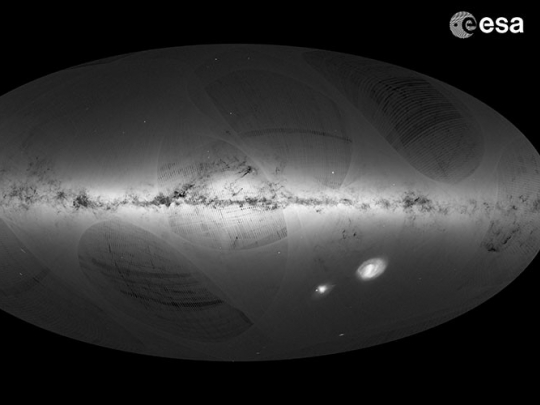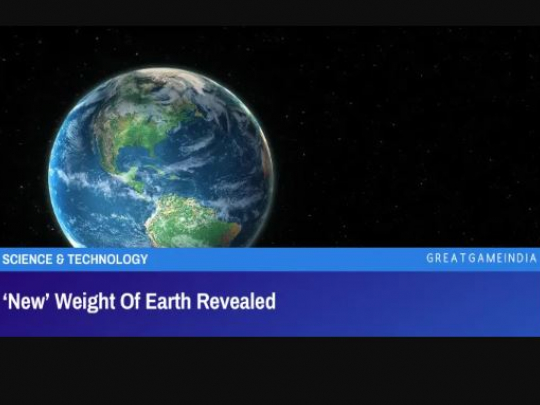'Galactic census': 1bn stars mapped by Gaia satellite (VIDEO)

The European Space Agency (ESA) has released the most detailed map of the Milky Way to date after cataloging the precise positions and brightness of more than 1.1 billion stars.
The 3D map released Wednesday, is based on observations from ESA’s Gaia spacecraft, which was launched in 2013 with the express purpose of charting the most detailed map ever of the stars in our galaxy.
The robotic craft, which is based about one million miles above earth, houses a one billion pixel camera and it is fitted with more than 100 electronic detectors. The resulting chart is 20 times more complete than previous representations of the Milky Way. However, it still only plots about 1 percent of the galaxy’s stars.
F.Jansen now describing the billion pixel focal plane camera at the heart of @ESAGaia. Here's how it works: https://t.co/Q67pCYXKp7 #GaiaDR1
— ESA Science (@esascience) September 14, 2016
Markus Bauer, from ESA’s Science and Robotic Exploration section, said at a press conference that Gaia is so exceptionally powerful that if it was sitting on the face of Earth, it could see a €1 coin on the surface of the moon.
The new map is based on data collected between June 2014 and September 2015. The space agency hopes the latest data will help astronomers to better understand the structure of the Milky Way and how it has changed over time.
T.Prusti: We're inside our Milky Way Galaxy & studying its structure is complicated https://t.co/ssicwMHQkv #GaiaDR1 pic.twitter.com/OUGoVF5gEc
— ESA Science (@esascience) September 14, 2016
Gaia was built to revise and continue the work of Hipparcos, an ESA satellite which made observations between 1989-93.
Astronomers already believe that the map will lead to significant scientific breakthroughs and discoveries. "Today’s release gives us a first impression of the extraordinary data that await us and that will revolutionize our understanding of how stars are distributed and move across our galaxy," ESA’s director of science, Alvaro Gimenez, said.
How one #Gaia stellar position helped to improve our understanding of #Pluto's atmosphere: https://t.co/eLUJNfPJBC pic.twitter.com/6zJeqSfUq1
— ESA Gaia (@ESAGaia) September 14, 2016
Astronomers will be much more adept at spotting which stars have planets, by observing which stars are affected by a planet’s gravitational pull.
Estimates suggest Gaia could identify a whopping 70,000 new exo-planets – planets which lie outside the Milky Way – by the end of the mission, a dramatic increase on the 3,500 currently known.
"Gaia is going to be extremely useful for exoplanets, and especially systems that have the Jupiter kind of planets," said ESA Gaia project scientist, Timo Prusti. "The numbers are going to be impressive; we expect 20,000. The thing is, you need patience because the exoplanets are something where you have to collect five years of data to see the deviation in the movements.”
Speaking at the European Space Astronomy Centre in Madrid, Anthony Brown from Leiden University, in the Netherlands, said: "You're imaging the whole sky in basically [Hubble] space telescope quality and because you can now resolve all the stars that previously maybe looked as though they were merged as one star at low resolution - now we can see them.”
- Source : RT















